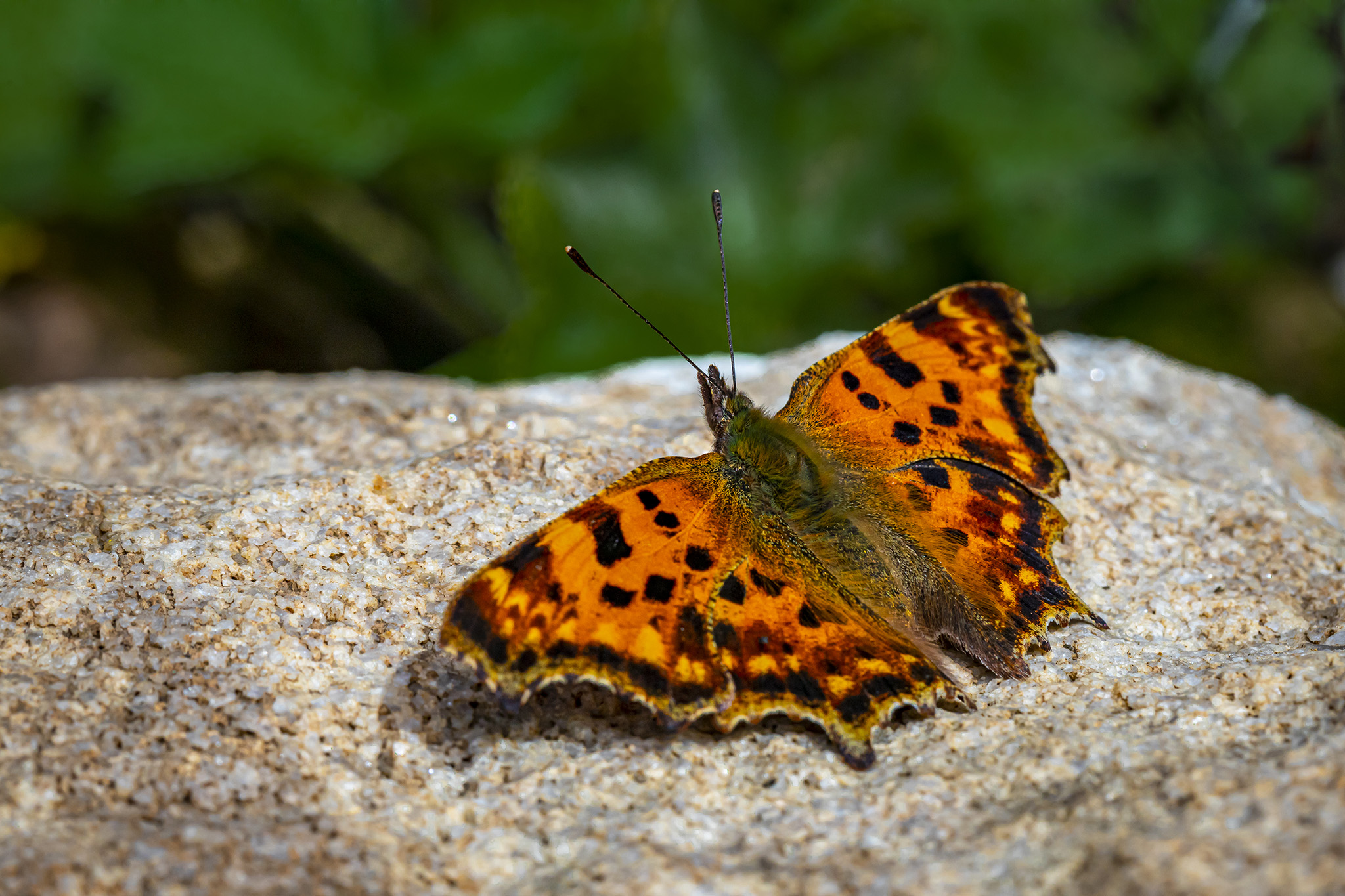Polygonia c-album, commonly known as the Comma butterfly, is a species of butterfly belonging to the family Nymphalidae. Here’s some information about this fascinating butterfly:
- Appearance: The Comma butterfly has a wingspan of about 45 to 60 millimeters. Its wings are primarily orange-brown with dark brown markings. One of the most distinctive features of this butterfly is a white “C” shape marking on the underside of its hindwings, which gives it its common name. When its wings are closed, the butterfly camouflages well against tree bark due to its mottled appearance.
- Habitat: Comma butterflies inhabit a variety of habitats, including woodlands, forest edges, hedgerows, gardens, and parks. They are often found in areas with a mix of open spaces and dense vegetation, where they can bask in the sun and find nectar from flowers.
- Lifecycle: The Comma butterfly undergoes complete metamorphosis, consisting of four stages: egg, larva (caterpillar), pupa (chrysalis), and adult butterfly. The female butterfly lays eggs on the leaves of host plants, which include stinging nettles (Urtica dioica) and hop plants (Humulus spp.). The caterpillars feed on these plants before pupating and emerging as adult butterflies.
- Flight Period: Comma butterflies are typically seen flying from March to November in temperate regions, with peak activity during the summer months. They are known to hibernate during the winter, often taking shelter in buildings, sheds, or other structures.
- Range: The Comma butterfly is found across Europe, Asia, and parts of North Africa. Its range extends from the British Isles in the west to Japan in the east. In recent years, it has also expanded its range northward into Scandinavia.
- Conservation: The Comma butterfly is not considered globally threatened and is generally a common and widespread species throughout its range. However, like many butterfly species, it may face localized threats from habitat loss, pesticide use, and other factors impacting its larval host plants and nectar sources. Conservation efforts focused on preserving natural habitats, promoting sustainable land management practices, and raising awareness about the importance of butterflies in ecosystems can help protect this species and its associated habitats.
Overall, the Comma butterfly is a beautiful and adaptable species that plays an important role as a pollinator in various ecosystems across its range.
Visited 192 times, 23 visit(s) today
Views: 352
Subscribe to the newsletter:
